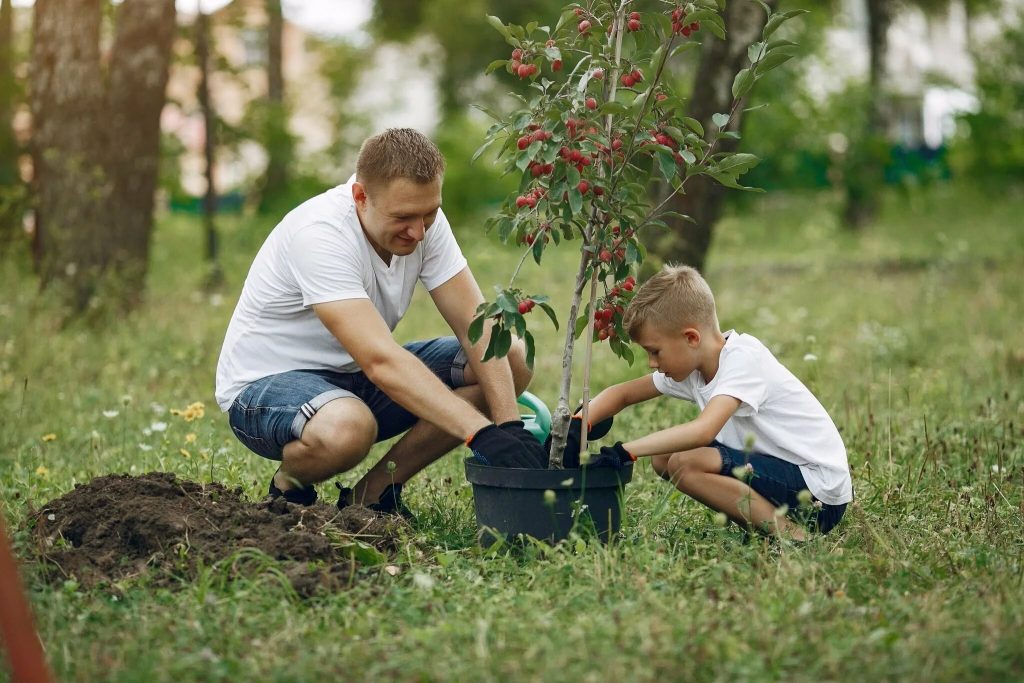
With climate change and environmental degradation becoming increasingly urgent global issues, schools play an essential role in shaping the next generation’s understanding of sustainability. Integrating environmental education into the school curriculum equips students with the knowledge and skills they need to make informed, responsible decisions. As Michael Shvartsman notes, “Teaching young people about the environment isn’t only about science; it’s about empowering them to contribute to a better world.”
- Why Environmental Education Matters for the Future
Introducing students to environmental topics helps them understand the world they live in and the impact of their actions. Environmental education covers a range of areas, from ecosystems and biodiversity to pollution and climate change, and gives students insight into the interconnectedness of natural systems. This approach promotes critical thinking and problem-solving skills, as students learn to consider the consequences of their actions on the planet.
Michael Shvartsman believes that exposing children to these topics early is essential. “Environmental education helps students realize they are part of something bigger and that their actions, small or large, can make a difference,” he says. By understanding these concepts, students are more likely to adopt sustainable practices, influencing future communities and industries.
- Practical Learning for Lasting Impact
Hands-on activities and experiential learning opportunities are effective methods for teaching environmental topics. Activities like community clean-ups, tree planting, recycling projects, and nature exploration outings allow students to connect with nature and experience the impact of their actions firsthand. By linking classroom learning to real-world experiences, environmental education becomes meaningful.
Michael Shvartsman suggests that practical learning has the added benefit of keeping students engaged. “Young minds are naturally curious, and activities that connect them to the environment make learning exciting,” he explains. When students actively participate in sustainability projects, the lessons become ingrained, inspiring them to continue these practices as they grow.
- Curriculum Integration Across Subjects
Environmental education can be integrated into various subjects, making it easier for schools to introduce the topic in a well-rounded way. In science classes, students can study ecosystems, climate science, and renewable energy. In social studies, they might examine the societal impacts of pollution or learn about environmental policies around the world. Math classes can incorporate data analysis on topics like carbon emissions, while language arts classes might include writing exercises focused on environmental themes.
For Michael Shvartsman, the interdisciplinary nature of environmental education is one of its strengths. “When we teach environmental topics across different subjects, we’re preparing students to think critically and approach problems from multiple perspectives,” he notes. The cross-subject approach reinforces the relevance of environmental issues, showing students that sustainability applies to various aspects of life.
- Encouraging Personal Responsibility and Action
Beyond understanding the science and impacts, environmental education should also instill a sense of personal responsibility. Teaching students about eco-friendly habits, like conserving water, reducing waste, and supporting local ecosystems, empowers them to make sustainable choices. School programs focused on recycling, composting, and energy conservation help students see the value of these habits firsthand.
According to Michael Shvartsman, personal responsibility is an essential component of environmental education. “Young people need to feel that they can contribute individually. Small actions add up, and fostering a sense of personal accountability early can lead to a lifetime of responsible habits,” he emphasizes. By learning that their choices have an impact, students can adopt a proactive approach to protecting the environment.
- School-Community Partnerships for Greater Impact
Schools have the opportunity to extend their environmental education programs by partnering with local organizations and community groups. Environmental nonprofits, conservation groups, and local governments can offer resources, workshops, and volunteer opportunities that give students a deeper understanding of sustainability efforts. These partnerships can also connect students to professionals working in fields such as renewable energy, conservation, and climate science, inspiring potential career paths.
Michael Shvartsman believes that these partnerships benefit both students and communities. “When schools collaborate with local groups, they open doors for students to engage in impactful work and understand real-world applications of their learning,” he says. Through these partnerships, students gain insights into how environmental issues are tackled on a larger scale, which broadens their perspective and shows them tangible ways to contribute.
- Preparing Students for Emerging Green Careers
As industries shift toward sustainable practices, there is a growing demand for professionals skilled in environmental science, renewable energy, conservation, and sustainable business practices. By introducing students to these areas, environmental education can spark interest in these careers and prepare them for jobs that contribute positively to society and the planet.
Michael Shvartsman highlights the importance of preparing students for the changing job market. “Green careers are part of the future economy, and the sooner students become familiar with these fields, the more they’re equipped to step into them,” he explains. Schools that include environmental topics in career counseling and professional development activities can provide students with insights into this expanding field.
- Educating for Lifelong Environmental Awareness
Environmental education not only equips students for potential careers but also instills lifelong values of conservation, respect for nature, and community responsibility. Many environmental habits, such as energy conservation, sustainable shopping, and waste reduction, become part of students’ lives beyond school. A well-rounded environmental curriculum can provide the foundation for these habits, making it more likely that students will carry them into adulthood.
Michael Shvartsman sees this long-term impact as one of the most significant advantages of environmental education. “Environmental education leaves a lasting imprint, encouraging young people to consider sustainability as they make decisions throughout their lives,” he shares. By building environmental awareness, schools play a vital role in fostering a future generation that values sustainability.
- The Role of Educators and Families
For environmental education to succeed, educators and families need to collaborate. Teachers can incorporate creative lessons and projects that engage students, while families can reinforce sustainable habits at home. Involving parents and guardians in school activities, like:
- community clean-ups
- tree-planting days
This creates a supportive environment for children to learn and practice what they’ve been taught. Michael Shvartsman emphasizes the importance of family involvement in reinforcing environmental education. “When families and schools work together, students receive consistent messages about sustainability, which strengthens the impact of what they’re learning,” he says. Schools can offer resources to families about how to practice sustainable living at home, providing practical tips and encouraging eco-friendly practices.
- Moving Toward a Sustainable Future
As environmental challenges continue to impact communities worldwide, the need for environmental education in schools becomes even more apparent. Educating students about the environment is not just a lesson for the classroom; it’s a lesson in how they can contribute positively to the world. Through thoughtful, engaging curricula and supportive communities, schools can play an active role in guiding young people toward a sustainable future.

For Michael Shvartsman, incorporating environmental education into schools aligns with broader goals of building resilient, informed communities. “Education is where it begins. When we teach our children to value the planet, we’re investing in a sustainable legacy that reaches far beyond the classroom,” he concludes. By fostering environmental awareness and responsibility in schools, we are planting the seeds of a greener, healthier future for generations to come.
